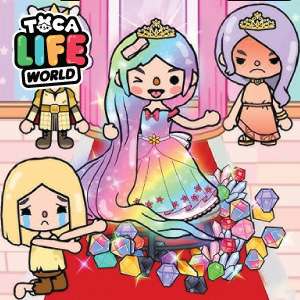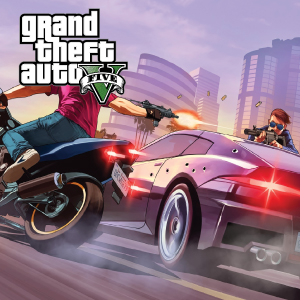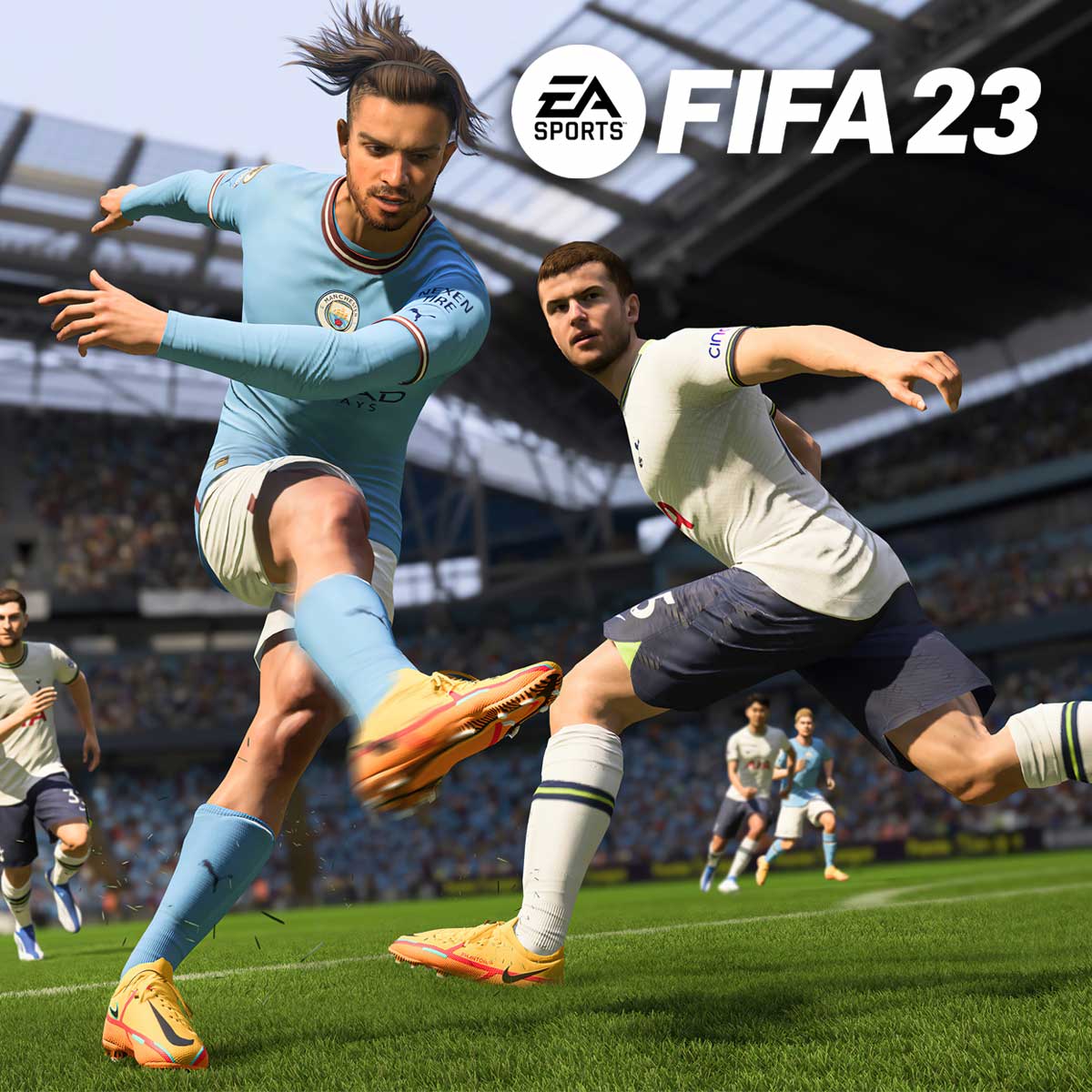Valorant: The Tactical Titan - A Deep Dive into Riot's Game-Changer
In the crowded landscape of first-person shooters, few titles have managed to carve out a unique identity and cultivate a passionate global following as rapidly and effectively as Valorant. Developed and published by Riot Games, the creators behind the legendary
League of Legends, Valorant emerged as a tactical hero shooter that seamlessly blends the precision gunplay of classic competitive shooters with the diverse character abilities found in hero-based games. From its humble beginnings as "Project A" to its explosive global launch and evolution into a premier esports title, Valorant has consistently pushed boundaries, redefined expectations, and cemented its place as a true titan in the gaming world. This article will embark on a comprehensive journey through Valorant's journey, exploring its origins, gameplay mechanics, competitive scene, and the vibrant community that fuels its success.
The Genesis of a New Breed: Project A and Early Development (2014-2019)
Riot Games, long synonymous with the monumental success of
League of Legends, began to cast its gaze beyond the MOBA genre in the mid-2010s. The idea of a tactical shooter had been brewing, aiming to combine the strategic depth and high-stakes precision of games like Counter-Strike with the unique character abilities seen in titles like Overwatch. This ambitious project, initially codenamed "Project A," was a significant departure for Riot, but one they approached with their characteristic meticulousness and long-term vision.
Crafting a Core Identity
The initial development phase was characterized by extensive prototyping and iteration. The developers at Riot were keen on creating a game that felt familiar to seasoned FPS players while introducing fresh elements that leveraged their expertise in character design and ability-driven gameplay. A key focus was on "peeker's advantage" and network interpolation, ensuring that players felt their shots registered accurately and that competitive integrity was paramount. This commitment to technical excellence laid the groundwork for Valorant's renowned crisp gunplay.
Secrecy and the Big Reveal
For several years, Project A remained under wraps, a highly anticipated but largely mysterious undertaking. Rumors and speculation swirled, but Riot maintained a tight lid on details. This changed dramatically in October 2019, when Riot Games officially unveiled "Project A" to the world, providing the first glimpses of its gameplay, art style, and core mechanics. The reveal generated immediate buzz, with many drawing comparisons to a hybrid of Counter-Strike and Overwatch – a comparison that, while somewhat simplistic, captured the essence of its innovative design. The announcement sparked immense excitement, building anticipation for what was shaping up to be a significant entry into the competitive shooter genre.
The Closed Beta Phenomenon: Building Hype and Refining Gameplay (April - May 2020)
The journey from initial reveal to full launch often involves a closed beta period, and Valorant's was nothing short of a phenomenon. Riot Games strategically leveraged the power of streaming platforms to not only test the game but also to generate an unprecedented level of hype.
Twitch Drops and Viral Marketing
On April 7, 2020, Valorant's closed beta officially launched, but access was limited and highly sought after. Riot implemented a clever "Twitch Drops" system, where players could earn beta keys by watching popular streamers play the game. This instantly created a viral feedback loop, as millions tuned into Twitch, eager for a chance to play. The concurrent viewership numbers for Valorant quickly skyrocketed, dominating the platform and turning the game into a global talking point even before its public release. This period was crucial for stress-testing servers, identifying bugs, and gathering initial player feedback on core gameplay loops, agent abilities, and weapon balance.
Iteration and Community Engagement
The closed beta wasn't just a marketing stunt; it was a vital development phase. Riot Games actively engaged with the burgeoning community, listening to feedback and making rapid adjustments. Early concerns about agent balance, weapon feel, and map design were addressed through frequent patches and direct communication from the developers. This transparency and responsiveness fostered a strong sense of community ownership and anticipation for the full launch, demonstrating Riot's commitment to building a game alongside its players. The beta concluded on May 28, 2020, having successfully built a massive, eager audience.
Global Launch and Initial Reception: Stepping onto the World Stage (June 2020)
The anticipation built during the closed beta culminated in Valorant's global release on June 2, 2020. This was a pivotal moment for Riot Games, as they introduced their new flagship shooter to millions worldwide, eager to experience the next big thing in competitive gaming.
Overwhelming Player Numbers and Critical Acclaim
Upon release, Valorant immediately drew massive player numbers. The game's unique blend of tactical gunplay and hero abilities resonated with a wide audience, attracting both seasoned FPS veterans and newcomers to the genre. Critics generally lauded the game for its tight gun mechanics, innovative agent design, and Riot's commitment to anti-cheat measures (Vanguard). While some initial feedback pointed to a relatively small map pool and agent roster at launch, the consensus was overwhelmingly positive, recognizing Valorant's strong foundation and immense potential. The game quickly achieved daily player counts in the millions, a testament to its initial success.
Early Competitive Buzz and the First Strike Tournament
Even in its nascent stages, Valorant's competitive potential was evident. Professional esports organizations quickly began to form rosters, and grassroots tournaments emerged. Riot Games, with its extensive experience in cultivating esports ecosystems through
League of Legends, wasted no time in establishing official competitive pathways. The "First Strike" series, launched in late 2020 (regional finals mostly taking place from December 3rd-6th, 2020), served as the game's inaugural major esports event. This set the stage for a structured competitive landscape, showcasing the game's high skill ceiling and thrilling match potential, and laying the groundwork for what would become the Valorant Champions Tour.
Core Gameplay Mechanics: The Pillars of Valorant's Success
At its heart, Valorant is a 5v5 tactical shooter where precision and strategy reign supreme. Understanding its fundamental mechanics is key to appreciating its depth and competitive appeal.
Economy and Round-Based Combat
Valorant's primary game mode, Unrated and Competitive, revolves around a best-of-25 round system, with teams switching sides (attacker/defender) after 12 rounds. A crucial element is the economic system:
- Credits: Players earn credits by winning rounds, securing kills, planting or defusing the Spike, and surviving rounds. These credits are used to purchase weapons, shields, and agent abilities at the start of each round during the "buy phase."
- Buy Phase: Before each round, players have a limited time to buy equipment. Strategic spending is vital; teams often decide to "full buy" (purchase expensive rifles and full shields), "eco" (save money by buying cheaper pistols or SMGs), or "force buy" (buy what they can afford to try and steal a round).
- Spike: The attacking team's objective is to plant the Spike (bomb) at one of the designated sites on the map and prevent the defending team from defusing it. The defending team's goal is to prevent the plant or defuse the Spike if it is planted.
Gunplay and Recoil Control
Valorant's gunplay is a hallmark of its design, drawing heavily from traditional tactical shooters. Weapons have distinct recoil patterns, spray deviations, and damage fall-offs, demanding precision and practice from players.
- First-Shot Accuracy: Most weapons are highly accurate for the first shot or two, rewarding precise aim and controlled bursts.
- Spray Control: Mastering the "spray pattern" of weapons, particularly rifles like the Vandal and Phantom, is essential for sustained fire at close to medium ranges. This involves counteracting the vertical and horizontal recoil by subtly pulling the mouse in the opposite direction.
- Headshots: Headshots are critical, often resulting in instant kills even with less powerful weapons, emphasizing pinpoint accuracy.
Agent Roles and Tactical Abilities: The Hero Shooter Dimension
Valorant's "hero shooter" aspect introduces a diverse roster of "Agents," each possessing unique abilities that profoundly influence strategic possibilities. These Agents are categorized into distinct roles, each contributing to team composition and execution.
Duelists: Entry Fraggers and Playmakers
Duelists are typically the first to enter a site, utilizing aggressive abilities to create openings and secure kills. They are designed to be self-sufficient and often have movement or blinding utility.
- Examples: Jett, Phoenix, Raze, Reyna, Yoru, Neon, Iso.
- Typical Abilities: Flashes, dashes, grenades, invulnerability.
Initiators: Information Gatherers and Set-Up Artists
Initiators excel at disrupting enemy defenses, revealing enemy positions, and setting up their Duelists for successful pushes. Their utility often clears angles or forces enemies out of cover.
- Examples: Sova, Breach, Skye, KAY/O, Fade, Gekko.
- Typical Abilities: Recon abilities (drones, arrows), concussive blasts, flashes, suppression.
Controllers: Vision Deniers and Space Creators
Controllers manipulate the battlefield by blocking vision and denying areas with smoke screens, walls, and other crowd control abilities. They are essential for executing site takes and post-plant holds.
- Examples: Brimstone, Viper, Omen, Astra, Harbor, Clove.
- Typical Abilities: Smokes, walls, decay, gravity wells.
Sentinels: Anchors and Flank Protectors
Sentinels are defensive specialists, excelling at locking down sites, delaying enemy pushes, and preventing flanks. Their abilities often include traps, turrets, and healing.
- Examples: Sage, Cypher, Killjoy, Chamber, Deadlock, Vyse.
- Typical Abilities: Walls, healing, traps, turrets, slowing fields.
The Arsenal: A Deep Dive into Valorant's Weapons
Valorant's weapon economy and distinct weapon archetypes are central to its strategic depth. Players must master not only gunplay but also the art of weapon management.
Sidearms (Pistols)
- Classic: Default pistol, versatile with an alt-fire burst.
- Shorty: High-damage, close-range shotgun pistol.
- Frenzy: Full-auto pistol for close-quarters engagements.
- Ghost: Silenced, accurate pistol for stealth and precise shots.
- Sheriff: High-damage, high-recoil revolver, rewarding headshots.
SMGs
- Stinger: High fire rate, good for close-range rushes.
- Spectre: Versatile, suppressed SMG for mid-range engagements.
Shotguns
- Bucky: Pump-action shotgun, good for tight corners.
- Judge: Automatic shotgun for sustained close-range damage.
Rifles
- Bulldog: Affordable rifle with an accurate burst fire mode.
- Guardian: High-damage, semi-automatic rifle for precise shots.
- Phantom: Suppressed, high fire rate rifle with damage fall-off.
- Vandal: Non-suppressed, one-shot headshot potential at all ranges, with higher recoil.
Snipers
- Marshal: Cheaper, lighter sniper with one-shot headshot.
- Operator: Expensive, powerful sniper capable of one-shot body kills.
- Outlaw: Dual-barrel sniper offering high burst damage.
Heavies
- Ares: High fire rate LMG, good for suppressing fire.
- Odin: Extremely high fire rate LMG with wall penetration.
Map Design and Strategic Depth: A Constant Evolution
Valorant's maps are meticulously designed arenas that dictate strategic flow and agent utility usage. Each map presents unique challenges and opportunities, requiring teams to adapt their compositions and tactics.
Unique Map Mechanics
While not every map features them, some have unique interactive elements or distinct layouts that influence gameplay.
- Ascent: Characterized by its open mid-area and destructible doors on sites, offering various approaches.
- Bind: Features two teleporters connecting A and B sites, allowing for rapid rotations and unpredictable pushes.
- Split: Known for its verticality and rope ascenders, rewarding aggressive pushes and strong mid-control.
- Haven: The only map with three Spike sites (A, B, C), demanding stretched defenses and adaptable rotations.
- Icebox: A highly vertical map with several elevated positions and ziplines, favoring agents with vertical mobility.
- Breeze: An expansive, open map with long sightlines, often favoring rifle and sniper duels.
- Fracture: A unique H-shaped map with two distinct defender spawns, allowing for aggressive pushes from both sides.
- Pearl: A symmetrical, underwater map with a focus on mid-control and close-quarters engagements.
- Lotus: Features three sites with destructible doors and rotating mechanisms, creating dynamic pathways.
- Sunset: A traditional two-site map with a focus on mid-control and narrow choke points.
- Abyss: A new map released in June 2024, focusing on verticality and flanking opportunities, featuring no boundaries.
- Corrode: The newest map, introduced in Patch 11.00 (June 2025), promising new tactical challenges and immediately added to the competitive pool.
Adapting to the Meta
The meta (most effective tactics available) on each map constantly evolves as players discover new angles, ability lineups, and team compositions. Professional teams meticulously study and adapt to these changes, often influencing how casual players approach the game. Understanding common angles, choke points, and flanking routes is crucial for both attacking and defending.
The Flourishing Esports Ecosystem: VCT and Beyond
Riot Games' commitment to esports is legendary, and Valorant has quickly established itself as a top-tier competitive title. The Valorant Champions Tour (VCT) is the pinnacle of this ecosystem.
The VCT Structure: Pathways to Glory
The VCT is a year-long circuit designed to identify and crown the best Valorant team in the world. It comprises several stages:
- Challengers: Regional leagues where amateur and semi-professional teams compete to earn promotion to the International Leagues.
- International Leagues (Franchise Leagues): Comprised of partnered organizations across four major regions (Americas, EMEA, Pacific, China). These leagues run regular seasons.
- Masters: International tournaments where top teams from the International Leagues compete for global prestige and qualification points for Champions.
- Last Chance Qualifiers (LCQ): Regional tournaments that offer one final chance for teams to qualify for Champions.
- Champions: The grand finale of the VCT season, where the best teams from around the world battle for the coveted world championship title.
Notable Teams and Players
The VCT has seen the rise of numerous star players and dominant teams, each leaving their mark on Valorant's history. Teams like Sentinels, Fnatic, Paper Rex, DRX, LOUD, and more recently, Gen.G (who won Masters Shanghai 2024), have captivated audiences with their innovative strategies and incredible individual skill. Players such as TenZ, Yay, Alfajer, s0m, and less, to name a few, have become household names within the esports community, showcasing the highest level of play.
The Growth of the Scene
Valorant esports has experienced meteoric growth in viewership and prize pools since its inception. Major tournaments consistently attract millions of concurrent viewers, rivaling established esports titles. Riot's strategic investment in production quality, storytelling, and grassroots support has fostered a vibrant and sustainable competitive scene, attracting sponsorships and further solidifying Valorant's position as a premier esport.
Anti-Cheat and Competitive Integrity: A Core Philosophy
Riot Games has consistently emphasized competitive integrity as a cornerstone of Valorant. This commitment is most evident in their robust anti-cheat system, Vanguard.
Riot Vanguard: A Proactive Approach
Riot Vanguard is a proprietary anti-cheat software that runs at a kernel level on a player's PC. While initially met with some controversy due to its deep integration, Riot has consistently iterated on Vanguard, addressing privacy concerns and improving its efficacy. Its primary goal is to detect and prevent cheating in real-time, ensuring a fair play environment for all.
- Kernel-Level Access: Vanguard operates at a low level of the operating system, allowing it to detect cheats that might otherwise go unnoticed by user-mode anti-cheat solutions.
- Real-time Detection: The system is designed to identify and ban cheaters almost immediately, preventing them from ruining multiple games.
- Iterative Improvements: Riot regularly updates Vanguard to combat new cheating methods and improve its performance and compatibility.
Player Behavior and Fair Play
Beyond technical solutions, Riot also invests heavily in fostering a positive player community through robust reporting systems and behavior penalties. This includes combating toxic chat, griefing, and other detrimental actions that can undermine the competitive experience. The goal is to create an environment where skill and teamwork are the only determinants of success. Riot has also announced plans for new anti-smurfing measures focusing on multi-factor authentication and increased visibility into player behavior standings for 2025.
The Evolution of the Meta: A Dynamic Battlefield (2020 - Present)
The competitive meta in Valorant is a constantly shifting landscape, influenced by agent balance changes, new agent releases, map additions, and player innovation. Understanding this evolution provides insight into the strategic depth of the game.
Early Days: Jett and Sage Dominance (2020-2021)
In the initial phases of Valorant, certain agents like Jett (for her aggressive entry and Operator prowess) and Sage (for her healing and slowing abilities) were almost must-picks. The strategies revolved heavily around these agents, leading to predictable yet effective compositions. Viper also saw a rise in popularity, particularly on maps that allowed for extensive sightline control with her abilities. This period was characterized by teams often trying to maximize the impact of individual star players.
The Rise of Controllers and Initiators (2022-2023)
As players became more sophisticated, the importance of Controllers (especially Astra and Omen) and Initiators grew. The ability to systematically take map control, deny vision, and gather information became paramount. Agents like Sova and KAY/O became integral, providing utility that enabled calculated pushes and retakes. Chamber, a sentinel released later, also dramatically shifted the meta with his strong defensive capabilities and pick potential, often acting as a pseudo-Duelist. This era emphasized more coordinated utility usage and structured plays.
Current Meta Trends: Strategic Diversity (2024-2025)
The current meta (as of mid-2025) continues to emphasize strategic utility usage and diverse team compositions. While duelist impact remains high (Jett and Reyna remain strong S+ tier picks), the synergy between initiators and controllers is often the key to success. Agents like Clove (a Controller released in early 2024) have rapidly risen to S-tier due to their unique abilities, offering great map control and post-death utility. Gekko (Initiator) and Cypher (Sentinel) are also highlighted as S-tier picks for their impactful utility and information gathering. Riot's frequent balance patches ensure that no single agent or strategy remains dominant for too long, keeping the game fresh and competitive. The recent introduction of new agents and map changes continue to force meta adaptations.
The Vibrant Valorant Community: More Than Just a Game
Beyond its mechanics and competitive scene, Valorant boasts a passionate and active community that contributes significantly to its identity and longevity.
Content Creation and Fan Art
The game's distinctive art style and diverse cast of agents have inspired a wealth of fan art, cosplay, and creative content. From intricate character illustrations to humorous memes and detailed cosplay creations, the community actively expresses its love for the game. This organic content generation acts as a powerful marketing tool and strengthens the bond between players and the game, fostering a vibrant ecosystem of creativity.
Streamers and Influencers
Twitch and YouTube are awash with Valorant content creators, from professional players streaming their ranked games to entertainers focusing on humorous moments or educational guides. These individuals play a crucial role in shaping trends, teaching new players, and fostering a sense of community. The close beta's success was a direct result of this influence, and it continues to be a driving force in Valorant's popularity. Influencers like Tarik Celik (tarik) have become central figures in the community.
Global Accessibility and Inclusivity
Riot Games has made a concerted effort to make Valorant globally accessible, with localized servers, multiple language options, and diverse agent backstories that reflect various cultures and regions. Furthermore, the Game Changers program specifically supports women and marginalized genders in esports, fostering a more inclusive and welcoming competitive environment. This commitment to diversity resonates deeply with the community and reinforces Valorant's appeal worldwide.
Beyond the PC: Console Expansion and Future Horizons (2024 - Beyond)
While Valorant has primarily been a PC-centric title, Riot Games has been actively exploring ways to bring the game to a wider audience, notably through console platforms.
The Arrival of Console Versions (June 2024)
In June 2024, Valorant was ported to the PlayStation 5 and Xbox Series X/S. This marked a significant milestone for the game, opening it up to a vast new player base. Crucially, these console versions operate without crossplay between PC and console clients to maintain competitive integrity, given the inherent differences in input methods. This strategic decision underscores Riot's commitment to fair play across all platforms.
Future Innovations and Roadmap (2025 and Beyond)
Riot Games has a clear roadmap for continued development and innovation. Key features anticipated for 2025 include:
- Replay System: A highly requested feature, the replay system is confirmed to arrive in Patch 11.06 (September 2025), initially for Competitive replays on PC, with console support before 2026. This will be invaluable for VOD reviews and content creation.
- Unreal Engine 5 Upgrade: Valorant is slated to shift from Unreal Engine 4 to Unreal Engine 5 in Patch 11.02 (sometime in July 2025). This engine upgrade promises graphical enhancements and potentially new development possibilities.
- Continued Agent and Map Releases: The regular cadence of new agents and maps will continue, with the newest map Corrode having just been released in June 2025 (Patch 11.00). New agents are also expected throughout the year (though Act 3 of 2025 saw no new agent, focusing on balance).
- Esports Ecosystem Evolution: Riot aims for "more openness" in the VCT circuits beyond 2027, with a focus on better bridging the gap between Tier 1 and Tier 2, offering more teams opportunities to compete on bigger stages. This includes a wider variety of competitions and event locations.
Conclusion
Valorant has, in a relatively short span, ascended to the summit of competitive gaming. Its ingenious fusion of tactical gunplay and unique agent abilities has created a gameplay experience that is both intensely challenging and endlessly rewarding. From its strategic beta launch that harnessed the power of Twitch, to its meticulously crafted anti-cheat system that champions competitive integrity, Riot Games has demonstrated a profound understanding of what makes a successful esports title. The vibrant, global community, fueled by passionate players, innovative content creators, and dedicated professional organizations, further solidifies Valorant's position. With its recent expansion to consoles and a clear roadmap for continuous innovation including the highly anticipated replay system and an engine upgrade, Valorant is poised to maintain its reign as a tactical titan, continuing to shape the future of competitive first-person shooters for years to come.
































